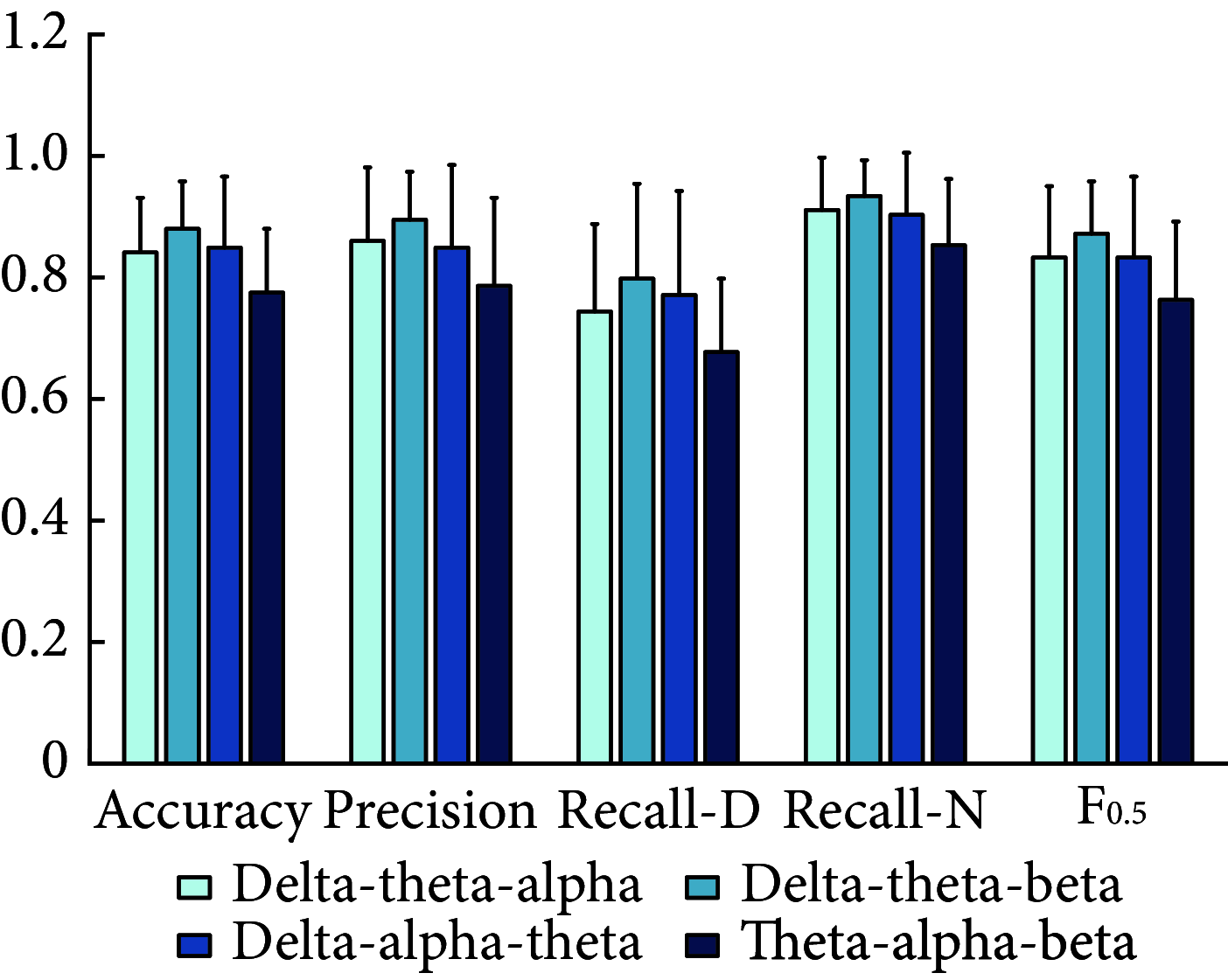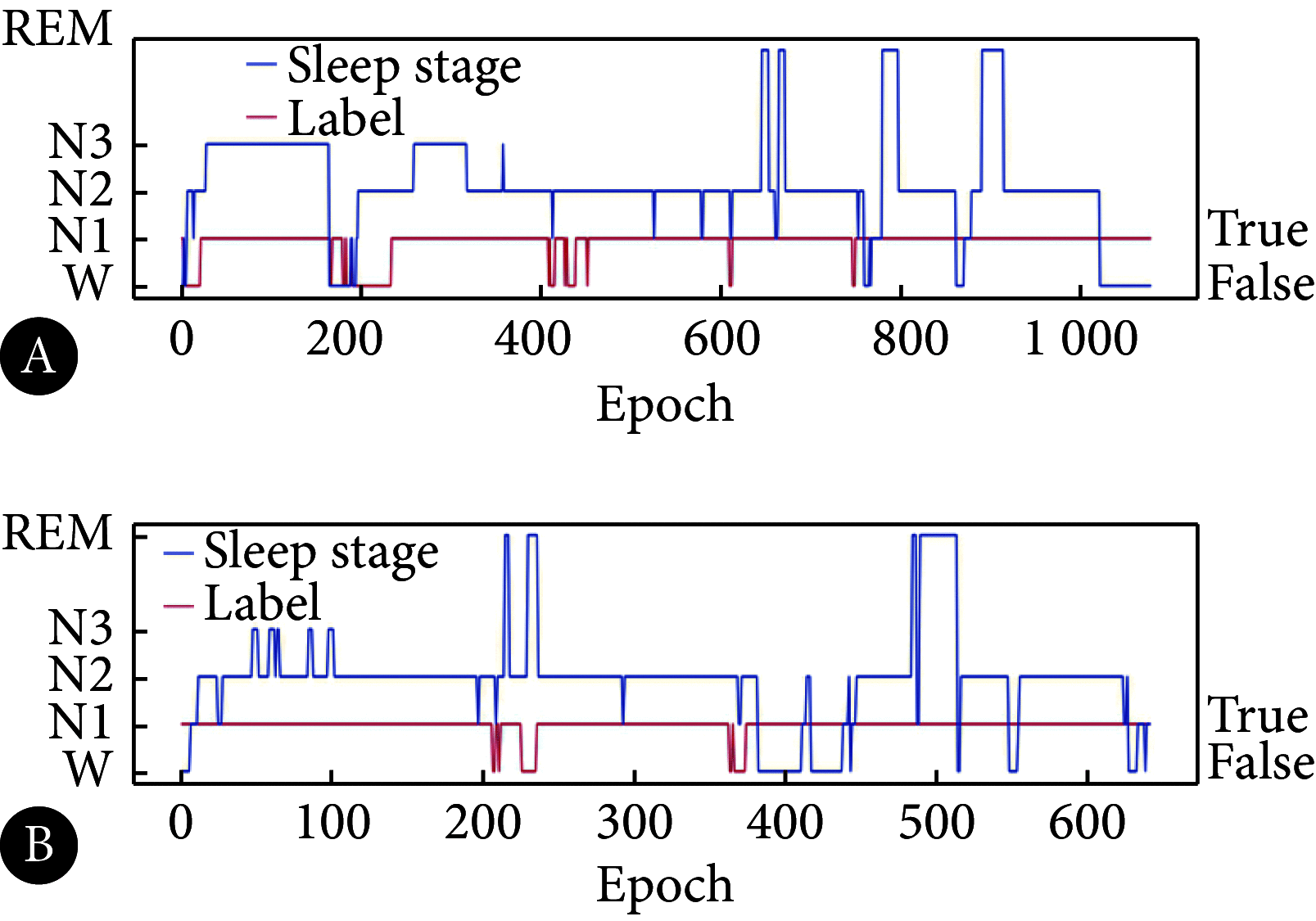[Identifying Depressive Disorder With Sleep Electroencephalogram Data: A Study Based on Deep Learning]
- PMID: 36949687
- PMCID: PMC10409169
- DOI: 10.12182/20230360212
[Identifying Depressive Disorder With Sleep Electroencephalogram Data: A Study Based on Deep Learning]
Abstract
Objective: To explore the effectiveness of using deep learning network combined Vision Transformer (ViT) and Transformer to identify patients with depressive disorder on the basis of their sleep electroencephalogram (EEG) signals.
Methods: The sleep EEG signals of 28 patients with depressive disorder and 37 normal controls were preprocessed. Then, the signals were converted into image format and the feature information on frequency domain and spatial domain was retained. After that, the images were transmitted to the ViT-Transformer coding network for deep learning of the EEG signal characteristics of the rapid eye movement (REM) sleep and non-rapid eye movement (NREM) sleep in patients with depressive disorder and those in normal controls, respectively, and to identify patients with depressive disorder.
Results: Based on the ViT-Transformer network, after examining different EEG frequencies, we found that the combination of delta, theta, and beta waves produced better results in identifying depressive disorder. Among the different EEG frequencies, EEG signal features of delta-theta-beta combination waves in REM sleep achieved 92.8% accuracy and 93.8% precision for identifying depression, with the recall rate of patients with depression being 84.7%, and the F0.5 value being 0.917±0.074. When using the delta-theta-beta combination EEG signal features in NREM sleep to identify depressive disorder, the accuracy was 91.7%, the precision was 90.8%, the recall rate was 85.2%, and the F0.5 value was 0.914±0.062. In addition, through visualization of the sleep EEG of different sleep stages for the whole night, it was found that classification errors usually occurred during transition to a different sleep stage.
Conclusion: Using the deep learning ViT-Transformer network, we found that the EEG signal features in REM sleep based on delta-theta-beta combination waves showed better effect in identifying depressive disorder.
目的: 基于睡眠脑电信号,探索深度学习Vision Transformer(ViT)结合Transformer网络对抑郁症患者识别的有效性。
方法: 首先对28例抑郁症患者和37例正常对照的睡眠脑电信号进行预处理,并将信号转为图像格式,保留其频域及空间域特征信息,之后将图像输送到ViT-Transformer编码网络,分别学习抑郁症患者和正常对照的快速眼动(rapid eye movement, REM)睡眠期和非快速眼动(non-rapid eye movement, NREM)睡眠期的脑电信号特征,并对抑郁症进行识别。
结果: 基于ViT-Transformer网络,从不同脑电频率角度,发现delta、theta和beta波的组合对抑郁症识别具有比较好的结果。其中,REM期delta-theta-beta波组合的脑电信号特征对抑郁症识别的准确率达92.8%,精准率为93.8%,抑郁症患者的召回率为84.7%,F0.5值为0.917±0.074;NREM期delta-theta-beta波组合的脑电信号特征对抑郁症的识别准确率为91.7%,精准率为90.8 %,召回率为85.2%,F0.5值为0.914±0.062。此外,通过对整夜睡眠脑电的睡眠分期进行可视化,发现分类错误通常发生在睡眠期转期时。
结论: 应用深度学习ViT-Transformer网络,本研究发现基于delta-theta-beta波组合的REM期睡眠脑电信号特征对抑郁症识别更有效。
Keywords: Deep learning; Depressive disorder; Non-rapid eye movement sleep; Rapid eye movement sleep; Sleep electroencephalogram.
Copyright© by Editorial Board of Journal of Sichuan University (Medical Sciences).
Conflict of interest statement
Figures





References
-
-
Organization WHO. Depression and other common mental disorders: global health estimates: World Health Organization, 2017. (2017-02)[2022-12-13].https://apps.who.int/iris/handle/10665/254610.
-
Publication types
MeSH terms
LinkOut - more resources
Full Text Sources
